You first feel it with that tickle in the back of your throat. Maybe you ignore it. Maybe you pretend to ignore it because you have things to do — then by evening, the tickle feels like someone took sandpaper to your trachea. Your head is pounding, and you feel chilled.
It’s obvious you’re coming down with a cold, you feel a flash of resentment toward that friend who said they had a touch of allergies. It looks like you caught their “allergies” and you’re not feeling good.
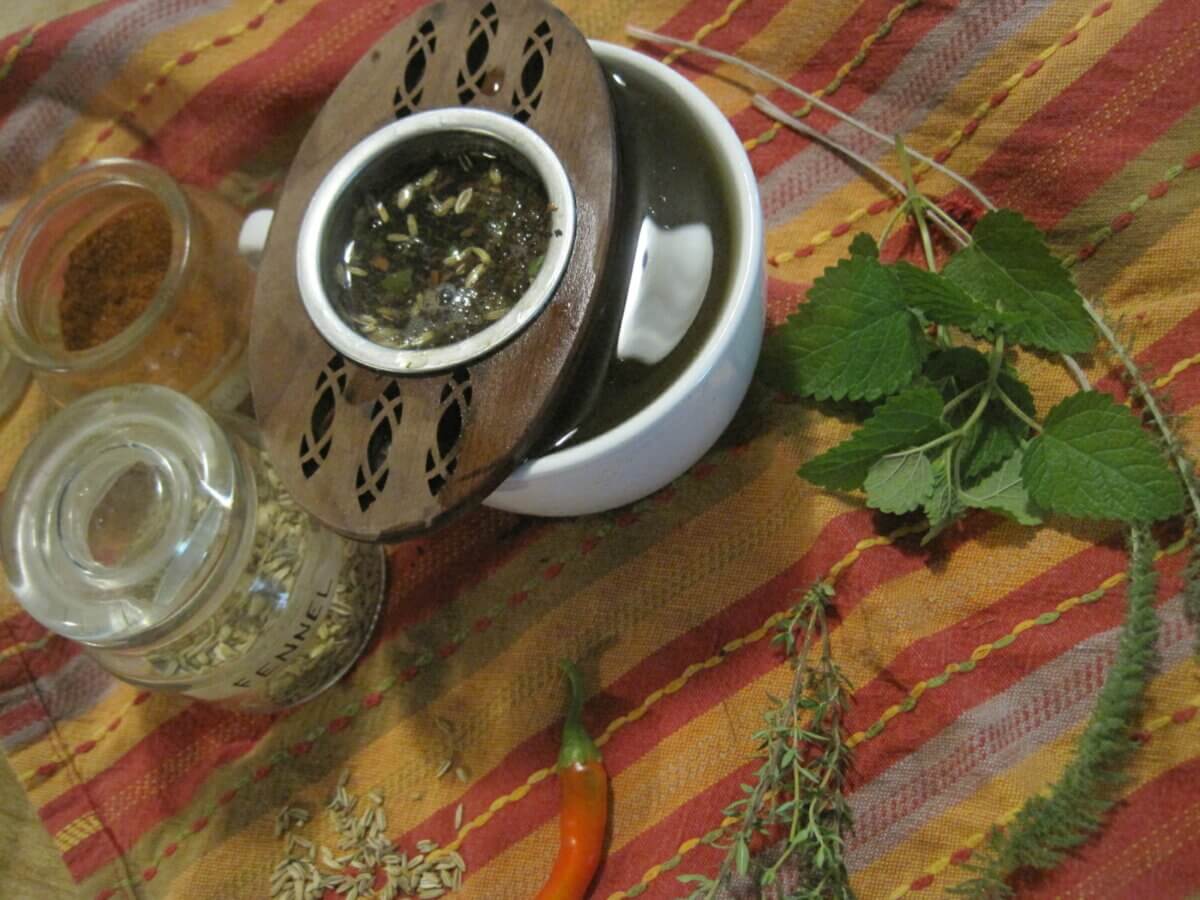
When you’re feeling awful, especially when there are gardens, animals, or other family members to care for, taking care of yourself can be tough. Sure, you can swallow some unnatural cocktail of OTC pills or disorienting, bright-colored syrups, and force yourself back to work, but that’s not always the best course of action.
Some of us aren’t content to rely on chemicals that merely mask our symptoms when natural and effective home remedies are waiting on the pantry shelf.
Now, it should go without saying that these are fixes for every day, feel-bad bugs, and recipes and advice from some random stranger online — not your doctor or a trained herbalist. All these methods should either help you or, at the very least, do no harm, but they come with no concrete guarantees. Please use good sense and judgment when it comes to natural health care and be willing to ask for medical help for serious situations.
9 Recipes and Remedies to Consider
So here are some recipes and natural remedies that I’ve come to rely on when coughs, runny noses, and fevers raise their ugly heads.
Not-From-a-Packet Ramen-ish Soup

Real ramen soup is so much more than a hyper-salted, cuboid, hunk-o-noodles consumed at odd hours in a college student’s night. There are hundreds of recipes and ingredients out there for the true ramen seeker. That said, this is absolutely not a traditional recipe, but it’s one I’ve created based on materials I can reasonably acquire in the Ozarks. It has served me well on many a sick day. Maybe you can take inspiration and come up with your own ramen-ish recipe.
If you yourself are under the weather, this dish will likely be too involved to prepare. But if you live with someone who loves you, they may be compelled to whip up this nutritious and comforting soup to help you recover.
Noodles
- 2 eggs
- 2 cups whole wheat flour
- 1 teaspoon baking soda
Broth
One-half gallon broth, thinned with 3 cups water if desired. It’s always nice to have canned or frozen broth on hand for sick weeks. Bone broth, chicken broth, goose broth, goat broth, beef broth, or vegetable broth are all good options.
Mix-ins
- 1 carrot, julienned
- 1 onion, thinly sliced
- 1-2 cayenne peppers, thinly sliced
- Finely slivered ginger
- Finely minced garlic
- Meat (as an option, stewed and shredded beef or chicken works well)
- Soy sauce
- Chili oil (optional)
- Mix noodle ingredients. The dough should feel a bit stiff, but if it’s crumbly, add small amounts of water until it holds. Form to a ball and set aside for at least 10 minutes (30 minutes would be better).
- In a large pot, add ginger, garlic, cayenne peppers, meat (if raw), carrots, and onions. Saute in a bit of oil until meat is cooked and the mix is fragrant, then add broth. Bring to a boil, then reduce to a simmer. Add soy sauce to taste.
- Using a pasta maker, turn dough into wide, thick noodles. I usually only work mine to setting 4, then cut it into linguine shapes. If you have no pasta machine, roll the dough as thin as you can and cut informal strips. Who cares how imperfect they are? We’ve got sick people to feed.
- Add fresh noodles to the simmering pot. They should cook completely and float within five minutes or so.
- Serve in steaming bowls, topped with a decorative drizzle of chili oil.
- Pass out on the couch, under your comfiest blanket.
Super Simple Miso Soup
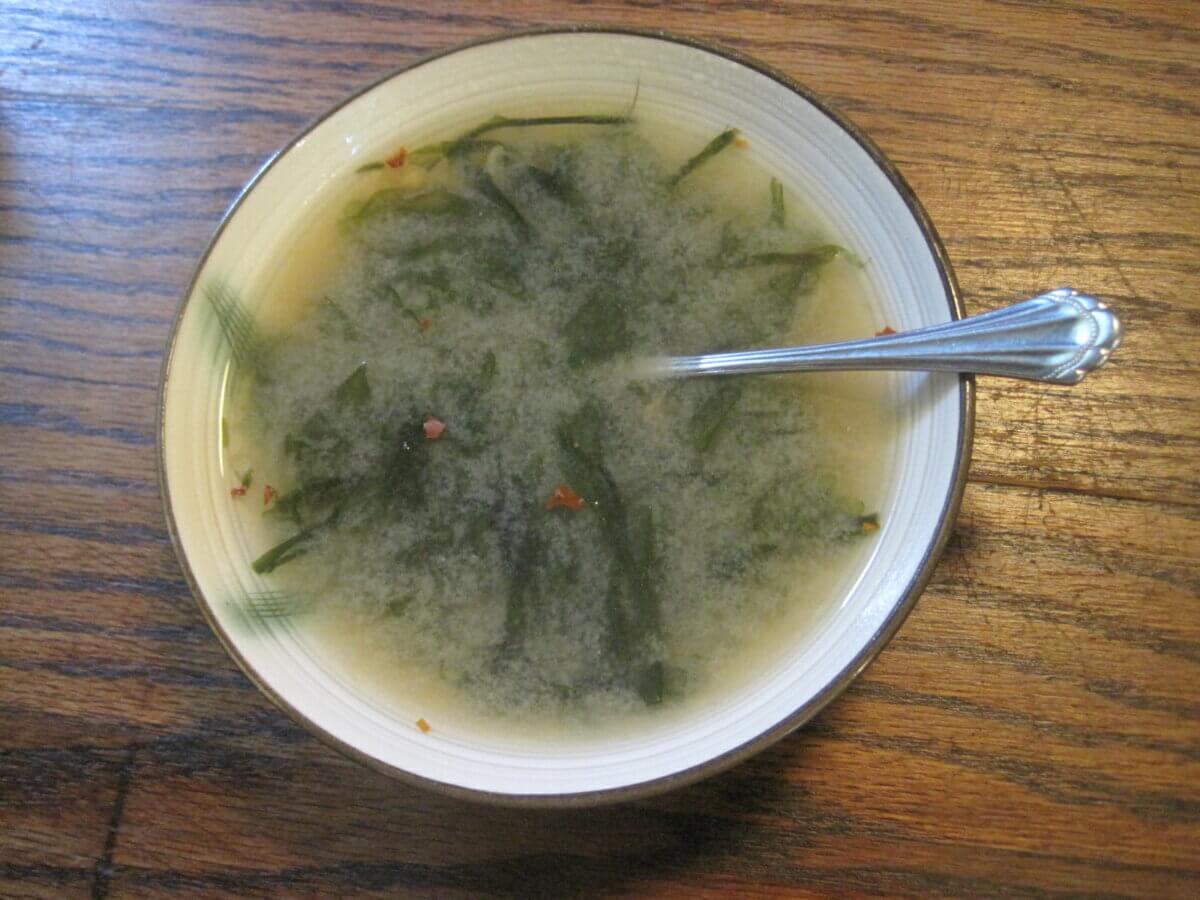
If there is no soup maker to be found but yourself, miso soup is simple to make and truly comforting to sip. If you can get yourself upright and can boil water, you can make this soothing sippable in five minutes from pantry staples (if you have the right staples, that is).
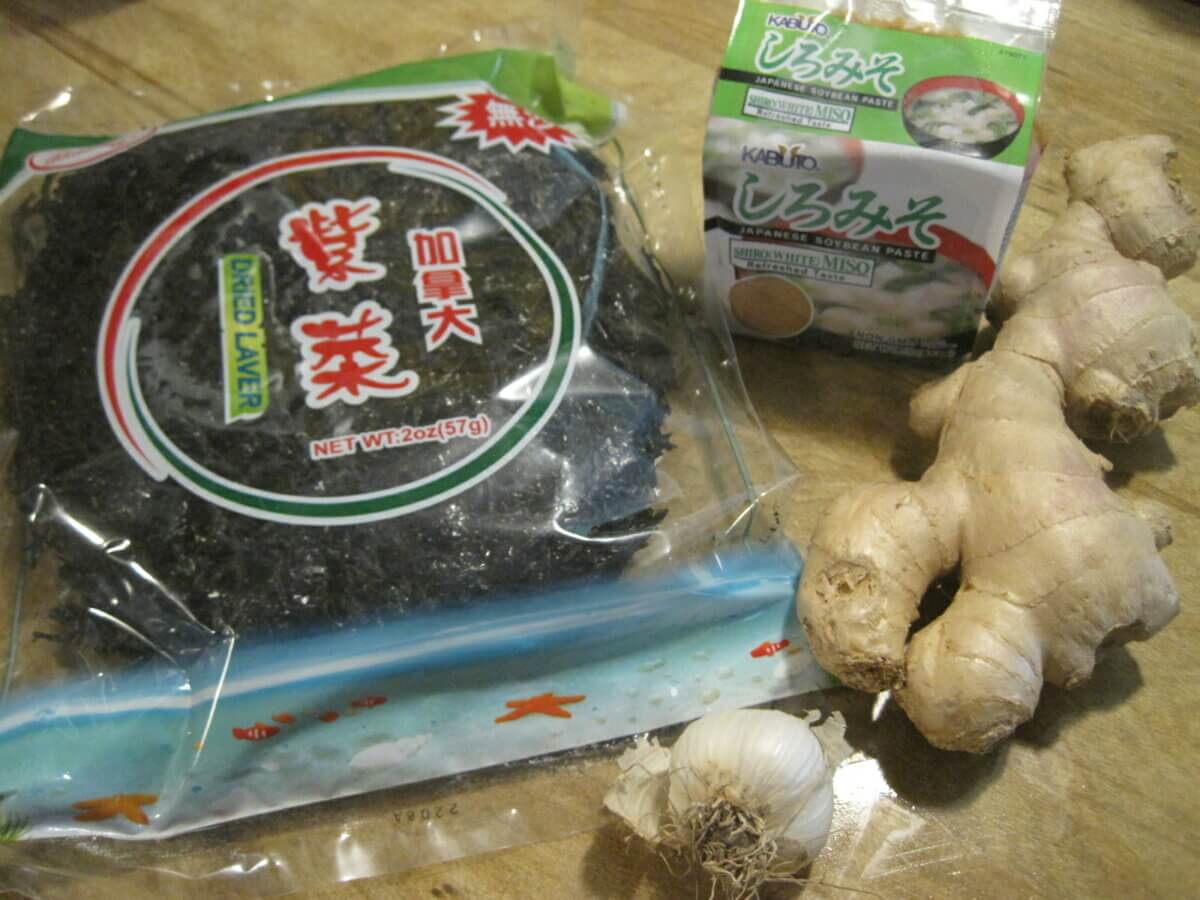
- White or red miso (make sure non-GMO soybeans were used)
- Seaweed of your choosing (wakame is delicious, but a little pricey. Laver seaweed, often sold in large, dehydrated rounds, is a dependable standby).
- Firm tofu (optional)
- Slivered ginger
- Minced garlic
- Black pepper to taste
- Bring water to a boil.
- In a bowl, dissolve one tablespoon miso paste (it will look and feel like peanut butter) with a bit of hot water, stirring until it liquefies. Add more water until the broth is the consistency and flavor you want (more water makes for less salty soup).
- Add a few pinches of dried seaweed, slivered ginger, cubed tofu, and black pepper.
- Allow to sit five minutes, then enjoy, as best as your congested sinuses will let you.
Congee/Juk/Rice Porridge

This thin rice gruel is basically overcooked rice, but when it’s hard to swallow most other food, it can be a lifesaver. Often used in cultures across the Asian world as an easy-to-digest food for invalids, it can help keep your boat afloat until the sun starts to shine again. It’s not traditional to use brown rice for this recipe, and it does extend the cooking time, but it’s worth it for the added nutrition.
- 3/4 cup brown rice
- 7-9 cups water (the more water, the creamier the end result)
Combine ingredients in a large stock pot, bring to a boil, then reduce to a simmer. Simmer as long as you can — the longer the better, stirring occasionally. The whole goal is for the rice to completely break down into a gentle, easy-to-sip porridge. Some recipes call for nine hours of simmering, but you can start dipping out bowlfuls after two or so. It’ll be bland, but when everything makes you feel ill, that may be precisely what you want. Season with a bit of salt or a drizzle of maple syrup, if desired, but don’t push yourself.
Thyme, Fennel, and Cayenne Tea
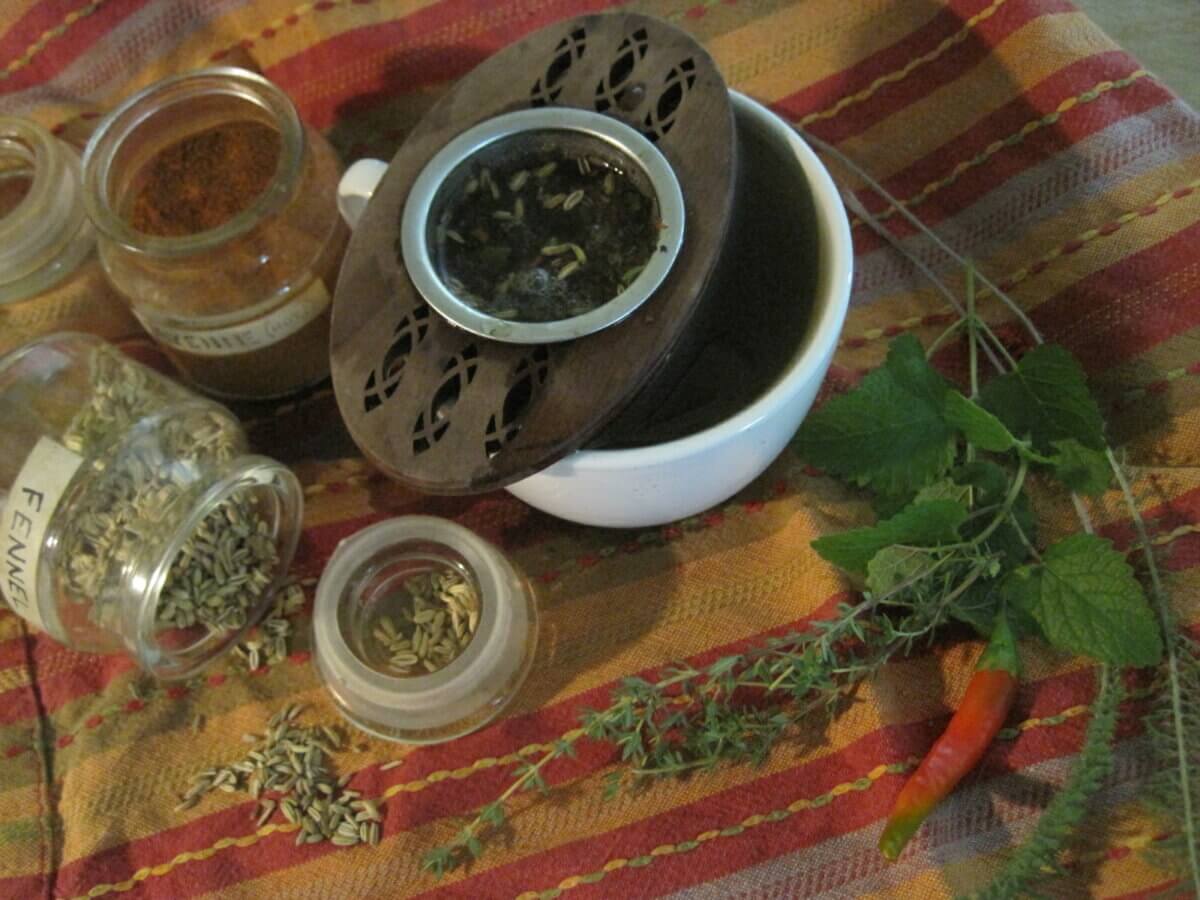
Thyme helps with infection and is good for coughs and sore throats. Fennel soothes stomach upset and lends a natural sweetness, and cayenne is a pain reducer full of immunity-supporting vitamins A and C. This is one of my favorite teas for the colds that come with those annoying, never-leave coughs.
Combine 1 part thyme to 1 part fennel (try a teaspoon of each) with a pinch of cayenne, and steep in boiling water for 15 minutes. Drink freely, sweetened with honey if desired, especially if you’re experiencing coughing fits.
Lemon Balm and Yarrow Tea
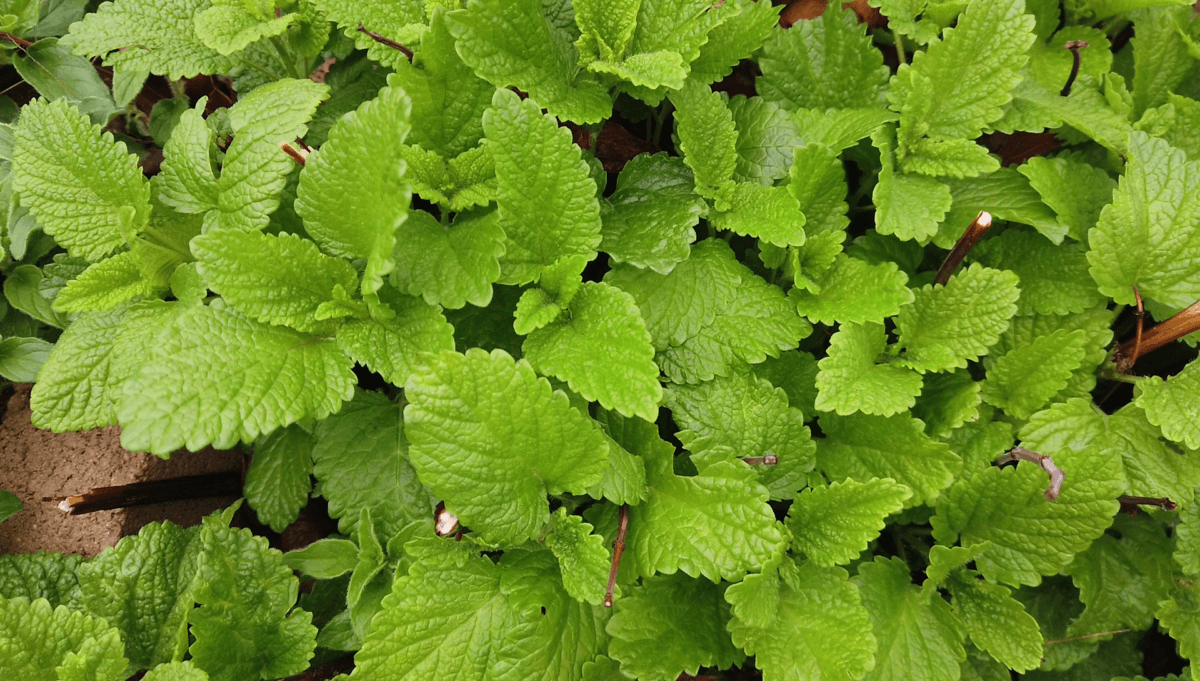
Lemon balm is a calming herb with strong antiviral properties, and tastes delicious, while yarrow is traditional, yet bitter-tasting fever-reducer. When combined, lemon balm can help override yarrow’s flavor, giving you something to sip while waiting for a fever to run its course. It won’t be a pleasant tea, but it can be effective.
Combine 1 part lemon balm to 1 part yarrow leaf and flower (try 1 or 2 tablespoons of each for starters). Steep with a quart of boiling water for 30 minutes. Sweeten with honey if desired, and sip by the cupful every half hour until the fever breaks.
Lemon and Honey Tea
This combination is a classic, but for good reason: It works. The honey coats and soothes the throat, and the bright acidity of the lemon gives you both a boost of vitamin C and balances the syrupy sweetness of the honey.
- 1 tablespoon honey
- 1 tablespoon lemon juice
- 1 cup of hot water
Mix all the ingredients in a mug. Sip, curled up in sniffly misery, watching your favorite cartoons. Don’t worry, none of us will judge you.
Mustard Poultice/Plaster
This is an old-fashioned remedy from before the Victorian era, when herbal medicine was still practiced by many households in the British countryside. It’s a good treatment to turn to when a chest-congested cough is keeping you from sleeping at night.
Mix 1 part ground mustard seed (you can either grind it yourself from whole seeds or buy the powder from the grocery store in the spice section) to 3 to 4 parts flour (the more flour added, the weaker the poultice will be — adjust for sensitive skin). I typically do a tablespoon mustard powder to 3 tablespoons flour.
Add enough warm water to make a thick paste. This will be spread on the chest and back.
Prepare the upper chest and upper back in line with the lungs, with a light coating of olive oil. Spread the mustard paste directly on the skin, then lay a handkerchief across the paste. Wrap around the entire chest and under the arms with an ace bandage or length of safety-pinned cheesecloth to hold the whole thing in place. It may feel a bit squishy and odd, but when you find that the chest congestion starts to break up and give you relief, you may stop questioning it and fall asleep.
Onions on Feet
Onions? On feet? I know this one sounds weird, but it’s a traditional method for reducing fever that both old-time Appalachian hill folk and herbalists like Richo Cech depend on, and one that I’ve personally seen work. Slice up fresh onions, apply them liberally and directly to the feet of a feverish person, then put on two pairs of socks to hold them in place. This is best employed at night, when the poor sickie wants to sleep and isn’t planning on walking around.
Rest and Water
You’ll hopefully notice a trend with the recommendations in this article: When you’re sick, you need to stay hydrated and not overexert yourself. All these treatments are a variation on that theme. So whether you use herbal treatments regularly or think they’re a load of hooey, there’s no denying the restorative effects of getting off your feet and drinking a lot of water until the sickness abates.
Resources
Most of the herbal combinations in this article are my own formulations, but they are informed by my experience and from the following resources:
Making Plant Medicine by Richo Cech
Rosemary Gladstar’s Medicinal Herbs, A Beginner’s Guide by Rosemary Gladstar
Herbal Medicine by Dian Dincin Buchman




























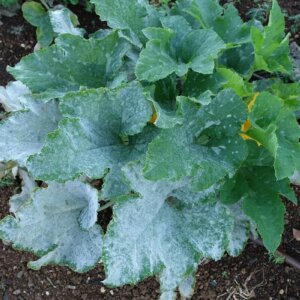













My four-year battle with breast cancer involved numerous unsuccessful treatments, including chemotherapy, radiation, and natural therapies. I found a cure through the World Rehabilitate Clinic, which offers effective medication to eliminate cancer cells and treatments for conditions like hysterectomy issues and Alzheimer’s disease. Educate yourself about your diagnosis and explore options at the World Rehabilitate Clinic.